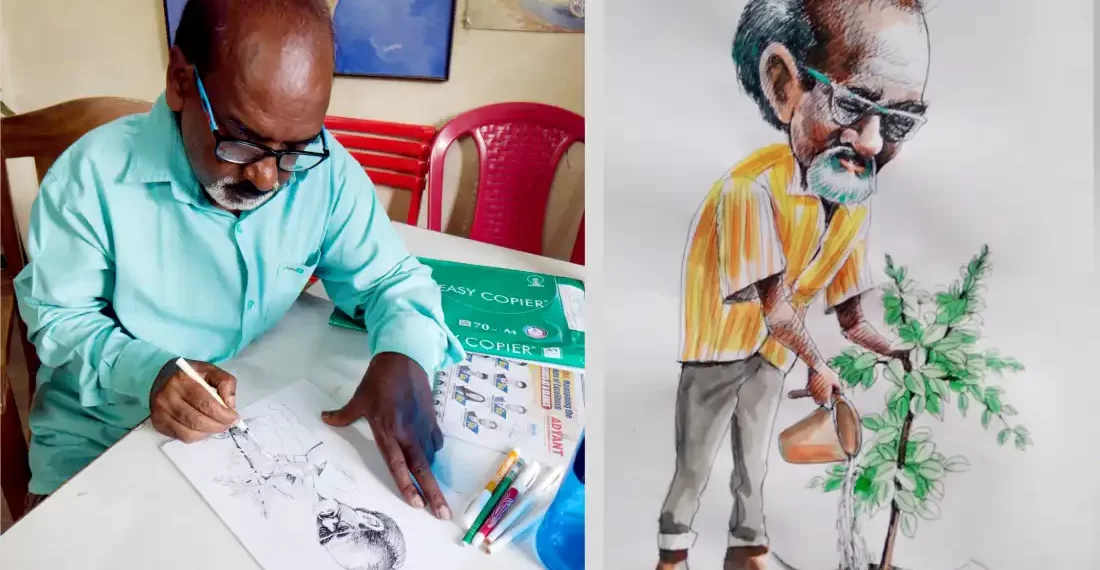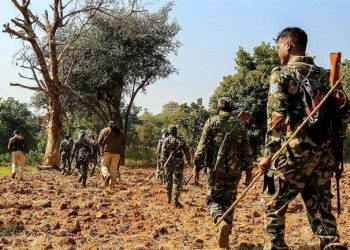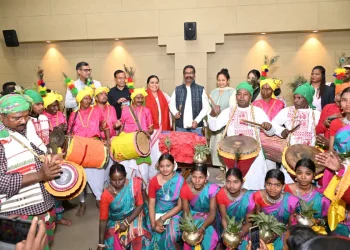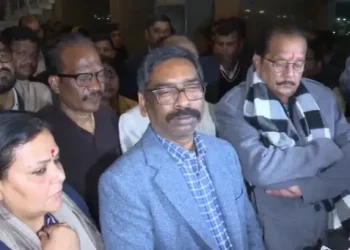Bhubaneswar
The death of noted artist-cum-cartoonist Kishore Rath of Odisha last year paved way to the formal birth of the Odisha Cartoonists’ Academy (OCA) in Bhubaneswar. Tribal artist-cum-cartoonist Sunarama Singh along with 16 of his friends and followers of his ilk congregated and created their cartoons of late Rath on the premises of his residence behind IDCO Tower, Bhubaneswar to pay homage to the departed soul.
Since 2018, the OCA had existed as a WhatsApp Group with only eight members exchanging their ideas and ideals among themselves. But the demise of Rath lent a formal shape to it under the stewardship of Sunarama and the likes of artist-cum-cartoonist Kesu Das—the latter being the vice president of the OCA. Now the outfit not only solves problems of its 25 members both creatively and socially, but also felicitates artist-cum-cartoonists of other states.
“Sunarama, one among the tribal artist-cum-cartoonists in Odisha, can choose his subject and draw out its cartoon in three minutes” says Kesu Das.
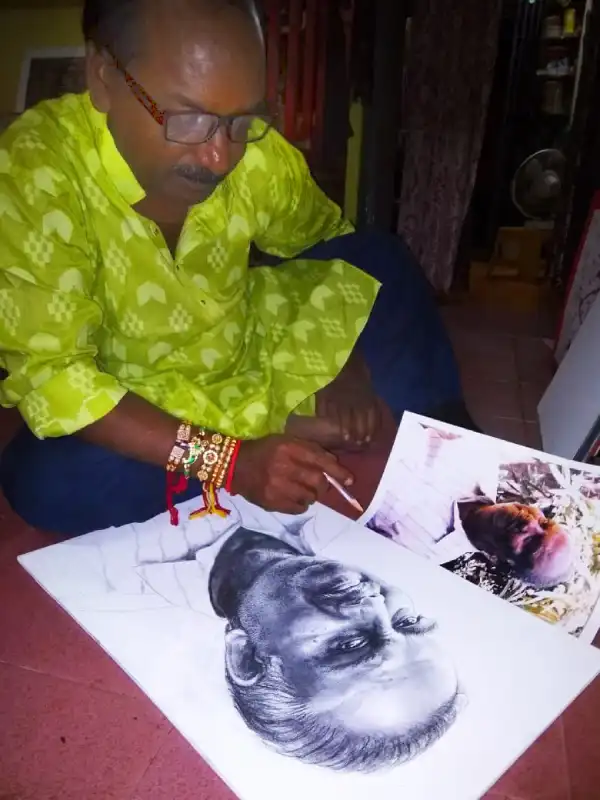
Sunarama, a Bhumija by tribe from Udala in Mayurbhanj, started exercising out his protest against the ‘wrong’ through his linear spoofs and send-ups since his student days (1982-87) in Government College of Art and Crafts (GCAC), Khallikot, Ganjam. Even Odisha Lalit Kala Akademi discerned an artist in him when he was a second year student in GCAC, and when it purchased his portrait ‘Trackman’ for Rs 2000.
Sunarama, who claims to be the first matriculate from his Bhurudubani Basti (Udala) of 12 Bramhins, 3,5000 Santhalis and six Bhumija families, belongs to a poor carpenter family of seven members. Yet his father never hesitated to get him admitted into GCAC to have a five-year course after he passed his matriculation in 1981.
Even during his student days in GCAC, he could sharply and swiftly draw out his cartoons that were witty and waggish, pleasant and playful, scathing and scoffing.
When he took his admission in GCAC, ragging there was said to be at its devilish best. The relation between the teachers and the taught, according to him, was propped up by ‘servitude’ of the taught, and teachers’ ‘vanity’. His heart rankled at this scenario and he resorted to sketching out cartoons to lampoon and lambast.
“I drew out over 20 cartoons on the walls of the institute to castigate it. Everybody was angry and aggrieved at my ‘audacity, but had to keep mum. The authority finally had the walls painted in ochre to hide them,” Sunarama shares with The Indian Tribal.
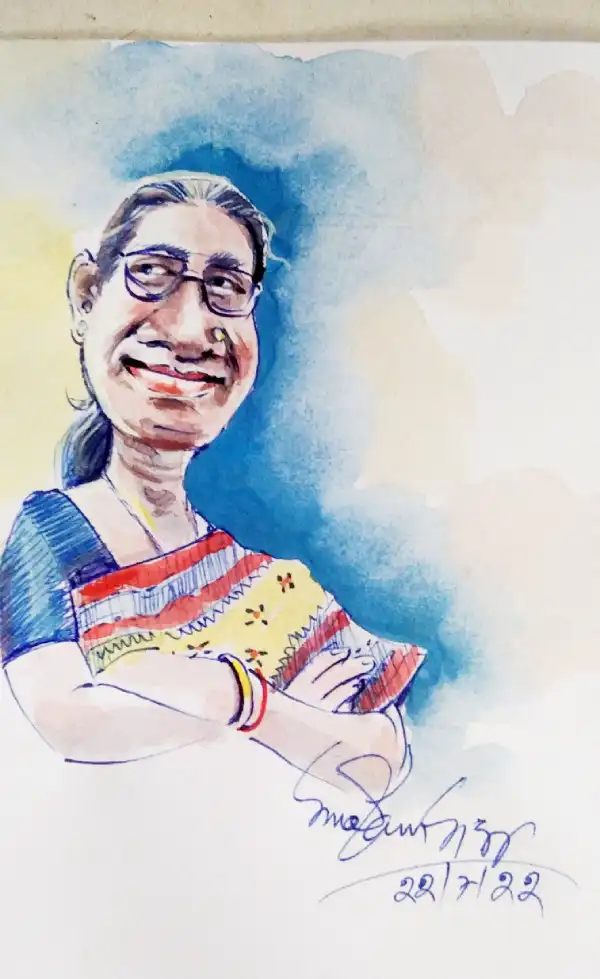
However, one cartoon that showed canine copulation to focus on the ‘gratification of biological need’ set the fur flying. Those, hurt and humiliated at it, grabbed it as an opportunity to vent out their captious anger. “But I never regretted. My contention was that it was a mere caricature that intended not to offend anybody,” he asserts.
Sunarama’s cartoons disseminate good message. When a tube well, sunk by Danish International Development Agency (Danida), was found severely damaged by some mischief-mongers at Sriram Nagar of Old Town, Bhubaneswar around 1988, he sketched out a cartoon to persuade people to refrain from committing such acts. The cartoon, the posters of which were circulated, showed how the tube well poured out tears instead of water.
“The cartoon impressed Danida so much that it offered me a job of an artist. I accepted it and worked for them for two years. They even wanted to take me to Denmark, but I declined, as I could not leave my parents. Then I joined Rama Devi University and worked there till 2022,” says Suranama, who was candid about his ignorance about photography, though he was holding the post of an artist-cum-photographer in the varsity.
When asked about one of the happiest moments of his life, Sunarama promptly referred to the time when he presented a portrait of Rama Devi (4’x3’) — a noted freedom fighter and social reformist during pre-Independence era — to President Droupadi Murmu during the convocation ceremony of Rama Devi University in February last. “The President exuded immense affability when she smiled and accepted my portrait,” he says.











